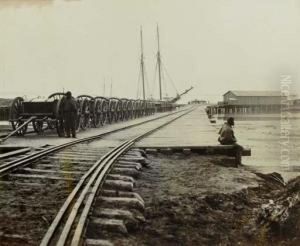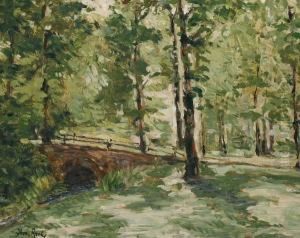Thomas C. Roche Paintings
Thomas C. Roche was an American photographer known for his work during the American Civil War and his contributions to the development of landscape photography. He was born in 1826, and although details of his early life and education are not widely documented, he emerged as a significant figure in American photography in the mid-19th century.
Roche's work during the Civil War era was especially notable. He was associated with E. & H.T. Anthony & Co., a company in New York that was a major producer and distributor of photographic supplies in the United States. Through this association, Roche produced a substantial number of stereoscopic views. Stereographs were a popular form of entertainment and education, offering a three-dimensional view of landscapes, cityscapes, and other subjects, including scenes of the Civil War.
After the war, Roche continued to photograph landscapes, and his work contributed to the growing appreciation of the American wilderness. This was a time when photographers like Carleton Watkins and William Henry Jackson were also creating images that would influence conservation efforts and the establishment of national parks.
Roche's photographs were characterized by their clarity and attention to detail. He often used large format cameras that allowed for high-resolution images, which was particularly important for the intricate landscapes he captured. His work is an important part of the visual history of the United States, providing insights into the urban and natural environments of the era.
Thomas C. Roche passed away in 1895. While he may not be as widely known as some of his contemporaries, his contributions to the field of photography, particularly his Civil War images and landscape photography, have earned him a place in the history of American art. His photographs are held in various collections and institutions, continuing to be studied and appreciated for their historical and artistic value.

